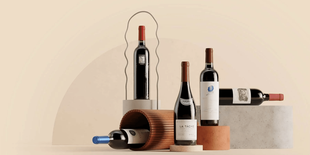Vinovest Quarterly Report Q3 2024
The summer months were anything but slow. From plunging interest rates to a historically wet and rainy growing season for France to record-setting sales of top-tier wines, the third quarter of 2024 brought flashes of drama and glimmers of optimism alike.
Here’s how wine, whiskey, and the broader landscape fared in July, August, and September.
Further reading
Catch up on last quarter's report here.
By The Numbers
1.13% - The average return for wine in Vinovest-managed portfolios
-2.71% - The average return for wine on the Liv-ex 1000, an index that tracks 1,000 of the most investment-worthy wines
-0.5% - The amount the U.S. Federal Reserve cut interest rates in September, an aggressive move expected to stimulate economic activity worldwide
100 - The points awarded to Opus One 2021 by esteemed wine critic Jane Anson Inside Bordeaux—a rare perfect score
100,000 - The record-setting amount (in Swiss francs) paid for a 27-liter bottle of Bibi Graetz Colore 2016, the most expensive Italian bottle of wine ever sold
Fine Wine Performance in Q3
The fine wine market is still taking its time to open up.
Prices have continued to slip, with the Liv-ex 1000, the index that tracks 1,000 of the most investment-worth wines, down another 1.9% in September—a sharper decline than August that continues the downward trend we’ve seen for nearly two years. Even Bordeaux and Burgundy, the usual vanguards of fine wine, weren’t immune: in September, Bordeaux dipped 1.5%, Burgundy by 1.7%, likely due to decreased purchasing, consumption, and investing in Asian markets, the regular top consumers and investors of those regions.
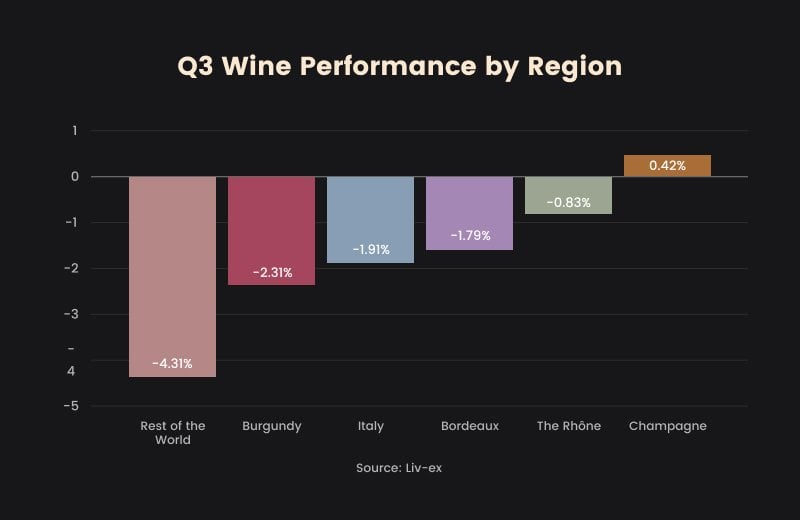
Intriguingly, last quarter’s top-performing region, the Rest of the World, also took a notable hit, falling 4.4% in September. Of those 60 wines—many of which are California cult cabs—Screaming Eagle’s Oakville cabernet sauvignon and Opus One both fell considerably, with Screaming Eagle’s 2016 vintage plunging 21.2%.
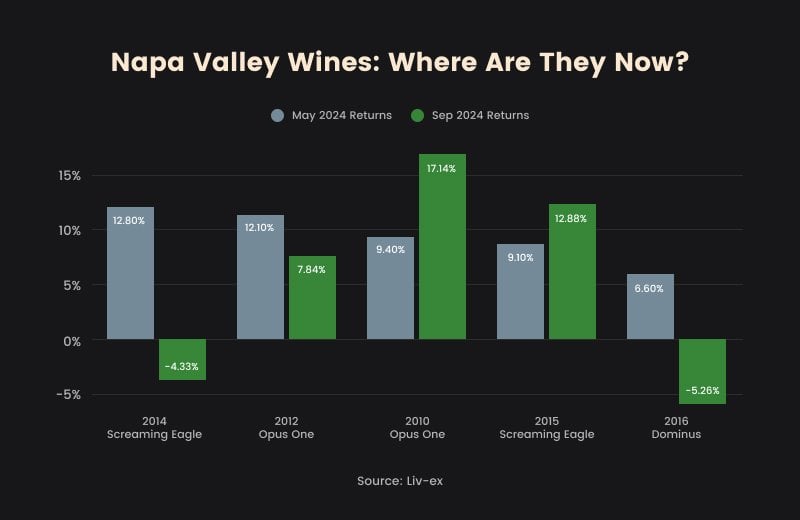
Why the abrupt turnabout? It’s a matter of dollars and cents—or, more properly, pounds and pence. While the USD is the default currency for many commodities and assets traded worldwide (such as oil), wine is valued and priced based on the Great British Pound (GBP). 2024 has proven to be a banner year for the GBP thanks to a robust British economy, with the Pound Sterling reaching a two-and-a-half year high against the USD in August. That strength has in turn had a negative effect on the component prices in that Rest of the World index, where Napa Valley wines are heavily represented.
All told, this might not paint the rosiest image of the fine wine market. However, for the bigger picture of wine investing—and for your portfolio—it’s quite the opposite. There are more than a few reasons to be optimistic about fine wine’s outlook.
We can begin at the broadest of the broad macro levels: interest rates. In September, investors worldwide toasted the U.S. Federal Reserve when it announced a long-awaited and surprisingly aggressive interest rate cut of 0.5%. Lower rates, of course, mean cheaper borrowing costs and increased economic activity—a rising tide for all sectors, but a particular boon to a luxury market like fine wine.
Moving to the wine market proper, there’s every indication that the present slowdown is bound to be temporary, not permanent. We’re already seeing indicators of spending, savings, and investment activity start to show patterns similar to pre-COVID years as economies finally complete their recovery from pandemic-related disruptions. With time—which, again, is the key ingredient in successful fine wine investing—what we’ll likely observe is as simple as a regression to the mean: historical returns will start to show smaller deviations as the observation period lengthens.
Of course, all these larger trends are well and good, but ultimately, any investment strategy comes down to the curation of a portfolio, and that’s where we see the brightest spot of all. At Vinovest, your portfolio is most likely beating the benchmarks. In other words, the specific selections of holdings in your portfolio are resisting the downturn compared to their peers.
While this resilience is obviously a positive in times of market correction, it’s also a considerable strength even when markets are booming. Why? Wines that beat the benchmark in down markets will likely do the same in up markets.
Think of a neighborhood where all houses are falling in price, except for one. That house isn’t appreciating per se, but it isn’t losing value, either—it’s holding steady. The owner of that steady-state house is in a better position to realize gains before his neighbors, even if he can’t yet command a higher asking price than he paid. Even if he does choose to sell for no net gain now, he could use that liquidity to buy some of his neighbor’s houses that are presently undervalued, therefore increasing not only the diversity of his assets but also positioning himself for outsized gains compared to owning only one property.
And, of course, not all wines are trending steeply downward. Italy’s Super Tuscans continue to hold their ground, with only a modest 0.9% decline month-on-month in September (a far better showing than Burgundy or Champagne, which saw steeper drops).
The takeaway here is that value is not only created when markets grow, and time, more than timing, brings the greatest rewards. The savvy investor knows that outperforming the benchmark during a downturn is like sitting on that prime piece of real estate (or, for that matter, holding the best bottle in the cellar): it positions you beautifully for even bigger returns once the market does move once again.
Q3 Wine Exits
Champagne once again showed itself to be a true classic. The region leapfrogged over the Q2 leaders of Bordeaux and Tuscany to become the most-represented region in our third-quarter wine exits, with just two of its estates—Dom Perignon and de Venoge—accounting for nearly 10% of wines exited.
Tuscany, for its part, drifted back down to a still-respectable fourth place, making this quarter’s top three regions the French powerhouse trifecta of Champagne, Burgundy, and Bordeaux.
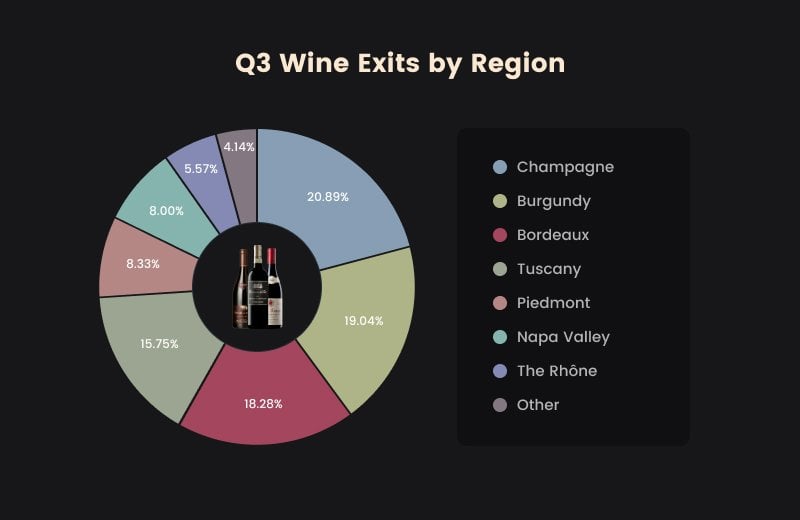
Fine Whiskey Performance in Q3
If you were an early investor in Vinovest's American whiskey portfolio, Q3 gave you something to toast—your whiskey is growing up.
In the third quarter of 2024, we hit a mini-milestone, as about 108 of our American whiskey barrels officially turned two years old. This means these barrels have now transitioned from neutral grain spirits to American straight bourbon.
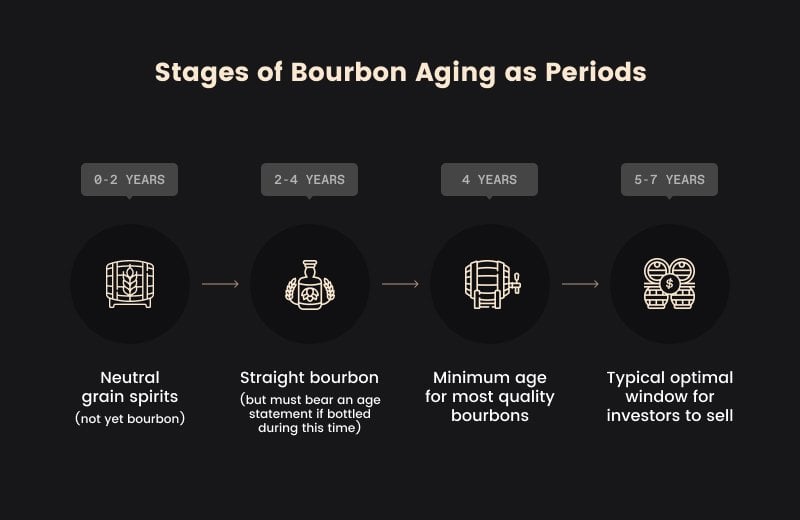
The birthday celebrations don't stop there, either. Over the next few months, we'll see additional batches of our whiskey reach this two-year mark, with more batches of barrels joining the ranks of fully-fledged bourbon.
While a two-year birthday isn’t quite as monumental as, say, the four-year milestone (the minimum age for high-quality American bourbon) or the 5-7 years of aging when well-known premium bourbons reach their quality threshold, it's still an important step in the maturation process. At this age, your bourbon is starting to develop the rich, complex flavors that make American whiskey so sought-after by connoisseurs and casual drinkers alike, and we think that’s something worth celebrating.
Investing Outlook for Q4 and Beyond
As the seasons change and 2024 approaches the autumn of its life, we asked our wine experts for their insights (and hopes) for what’s to come in the final months of the year and beyond.
What is the market sentiment like in fine wine?
Robbie Taylor, Head of Trading, APAC and Global: Unfortunately not much has changed—2024 has been a hard year and even now the Liv-Ex index has seen steady declines. Prices are dropping across the board, increasing competition for deals at low prices. There are some glimmers of buyers coming back into the market, but it’s slow and protracted.
What will be the best-performing wine region for the rest of the year?
Robbie: Bordeaux still holds the crown and is still stable, but market prices aren’t increasing, so it’s a little hit and miss depending on cost prices.
What is an overlooked wine region or winery?
Robbie: The Rhône is still overlooked. The market really only pays attention to a narrow selection of producers when there are so many superb wineries making wines with beautiful aging capacity.
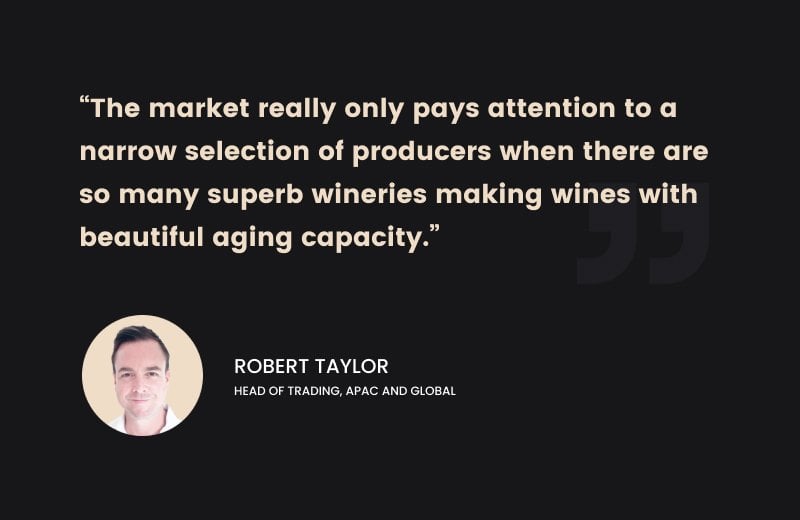
What else is on your mind?
Robbie: With the new financial stimulus in China, it’s a wait and see game if they come back into the market. China is awash with stock, and culturally (as far as wine goes) things have changed a bit. We all hope these new stimuli will filter down to the luxury import market and bolster the market.
The 3 Biggest Stories from Q3
1. Interest Rates Drop: What Does it Mean for Fine Wine Investing?
Perhaps the biggest financial news of the past three months can be summed up in two words: rate cuts. The U.S. Federal Reserve cut its interest rates by 0.5% in September, as we mentioned above, but the Bank of England bank also dropped its rates by a quarter of a percent in August, the first cut in over four years and potentially the first of several.
Lowered interest rates are generally considered a unilateral boon to economic growth across all sectors—fine wine included. The curious fine wine investor, though, might wonder how, specifically, this all trickles down to their portfolio—and what the best course of action is.
At Vinovest, we often emphasize the benefits of investing in wine or whiskey as alternatives to traditional vehicles because they don’t follow the same market patterns. This non-correlation not only diversifies your portfolio but also smooths out the volatility and risks associated with more conventional investments.
However, non-correlation doesn’t mean there’s no connection between financial markets and the fine wine market—quite the opposite, in fact. A slash in interest rates can spur demand for fine wine on several fronts.
On the consumer side, rate cuts tend to lead to more disposable income for individual buyers, who flock to luxury goods such as fine wine.
On the investment side, lower interest rates mean lower appeal to traditional savings vehicles, prompting investors to move their money out of safe, low-yield instruments like Treasury bills and into assets that promise higher return. This search for better returns leads directly to "alternative" investments such as fine wine, and the ensuing surge in demand often leads to bull markets, creating more wealth and, in turn, boosting luxury spending, including on fine wine—a truly virtuous cycle.
Finally, rate cuts often weaken domestic currency, which creates favorable exchange rates for foreign buyers that can further boost demand.
Solid principles in theory—and market data bears them out. Historical trends show a clear correlation between interest rates and wine prices. The graph below, from Liv-ex, shows the Liv-ex 1000 index against the Consumer Prices Index including owner occupiers' housing costs (CPIH), the UK’s metric for inflation, and the Bank of England’s interest rates. Conclusion: "we can see several examples of a decrease in interest rate directly predating an upward shift in the market – early 2009, mid 2016 and early 2020."
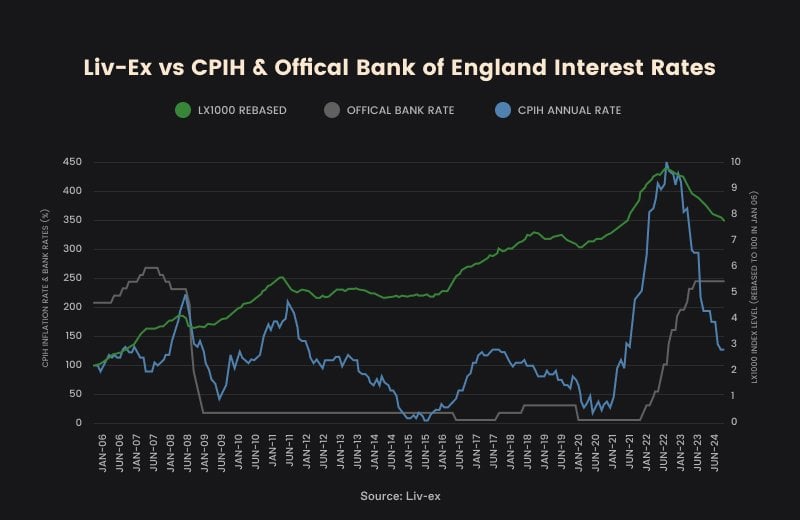
This correlation has been especially clear in the past five years. From 2020 to 2022, interest rates plunged as a result of pandemic-related economic policies, and fine wine prices soared, with some markets seeing growth exceeding 20%. When interest rates began creeping upward starting in 2022, the bull market in fine wine followed suit with a correction: though prices have now softened, they still sit comfortably above pre-pandemic levels.
It's not surprising, then, that as we enter another phase of rate cuts, economists and analysts alike are predicting that fine wine prices are set to rise once more, mirroring those previous cycles.
However, interest rates aren’t the only factor in play, and there are risks to consider. While the current economic backdrop looks promising for fine wine, persistent geopolitical uncertainty around the world can temper some buying enthusiasm. Inflation, too, is another factor to watch—if it stays high despite lower rates, central banks might feel compelled to halt or even reverse their rate-cutting spree.
All told, the short term outlook in the wake of these rate cuts is cautiously optimistic, but beyond that, much depends on the medium- and long-term picture of economic stability—something hard to predict based on interest rates (or, for that matter, any single indicator) alone. Fortunately, fine wine is a long-term asset, so if you’ve been waiting to expand your portfolio, this could be a golden window to do so.
2. France's "Most Difficult Growing Season in 50 Years"
In our last quarterly report, we covered the sudden, vicious hailstorm that pummeled the Chablis region of France in Northern Burgundy on May 1st. Though the damage of that spring “supercell storm” was as swift as it was brutal (more than decimating much of the appellation’s 15,000 acres) it was, unfortunately, far from the last of the meteorological troubles for Burgundy—or for France.
Wine production in France dropped 22% this year, according to a report from the country’s agricultural ministry, and the poor weather is to blame. An unusually rainy year (50 percent wetter than usual) and the resulting mildew, mold, and rot have made this, in the words of Florent Latour, CEO of Maison Louis Latour, “the most difficult growing season in 50 years.” Latour, speaking with the Robb Report, explained that a postponed harvest, with the hopes of leveraging strong winds to dry the grapes, led to a nearly round-the-clock effort to get the grapes picked and sorted, with offices left unstaffed and phones left to ring as every worker is pressed into service.
As we noted in Q2, we know that a smaller yield has the potential to translate to upward pressure on prices when that vintage is released—but given all the sturm und drang of the weather, will those 2024 Burgundies appeal when the time is right? Experts think so. The Bourgogne Wine Board’s (BIVB) Vintage Observatory, which has monitored the quality of the grapes throughout the season, described the balance of acid and sugar as “promising,” while Latour, as well as Gregoire Pissot, technical director at Saint Aubin’s Prosper Maufoux, likened the region’s conditions in 2024 to those it saw in 2016, when similarly wet and hail-ridden weeks ultimately yielded a highly-regarded vintage.
The bottom line? Good wine, but less of it, and a chance that the most coveted bottles will fetch attractive prices down the line.
3. A Landmark Year for Legendary Scotch
In 1824, James Madison was president of the United States, Beethoven’s 9th Symphony was the song of the summer, and a 15-year-old Louis Braille was inventing a dot-based code that allowed people to read using their fingertips.
It was also the year that an incredible 167 Scotch distilleries registered their founding documents—impressive considering that the population of Scotland at the time was only just over two million people. (That’s the equivalent of one new distillery for every 12,000 Scots.) Of those 167, just six remain open today—the Glenlivet, the Macallan, Fettercairn, Miltonduff, Cardhu, and Balmenach—making 2024 the year these six legendary distilleries celebrate their bicentennial.
What was so special about 1824, then, that makes this year two centuries later such a celebratory one? Primarily the fact that it came after the year 1823. That’s when King George IV of England paid a visit to Scotland and became so enchanted with its spirits that he rolled back the existing ban on private distilling. His Excise Act of 1823 permitted—but regulated—distilling for the fee of £10 (about £1,376, or $1,825, today) and ushered in a renaissance in Scotch distilling. While the first license granted after the act is rumored to have gone to one Jane Macgregor and her Littlemill Distillery, the official record is that George Smith, founder of the Glenlivet, was the first distiller to get the royal imprimatur and begin distilling on the books.
Naturally, the Glenlivet and its centuries-old peers are marking the year with showstopper releases, including the following:
- The Eternal Collection, the distillery’s oldest official single malt bottling, aged 55 years in a seasoned Sherry cask and bottled in distinctive spherical vessels (Glenlivet)
- Time:Space, the world’s oldest whiskey at 84 years old, captured in unique (to say the least) dual-chamber circular bottle (Macallan)
- The 200th Collection, a limited series of 10 handcrafted cabinets of Scottish oak containing six of the distillery’s rarest whiskies ranging from 49 to 28 years old (Fettercairn)
- A 41-year whisky aged in Sherry oak casks (Miltonduff)
- A limited-edition 12-year-old single malt that does double duty, celebrating 200 years as well as International Women’s Day in honor of Helen and Elizabeth Cumming, instrumental members of the distillery’s founding family (Cardhu)
- …a surprise, perhaps? The sixth and final bicentennial has yet to announce any special releases or promotions—but there’s still a few more months of 2024 to go! (Balmenach)
What Scotch will look like in another two centuries’ time is anyone’s guess. It’s fairly safe, however, to assume that these ultra-rare releases from some of Scotland’s most storied distilleries will fetch a handsome price by then—if any bottles are still around, that is.
Product Roadmap Spotlight
This past month, our product team was excited to roll out a new feature: the Discover section.
Your Vinovest web dashboard will now offer a tailored set of news flashes, educational tidbits, and limited-time opportunities based on your interests, portfolio holdings, and the state of the market.
If you haven’t logged in to our web interface lately, we highly encourage you to pay a visit and discover something new.
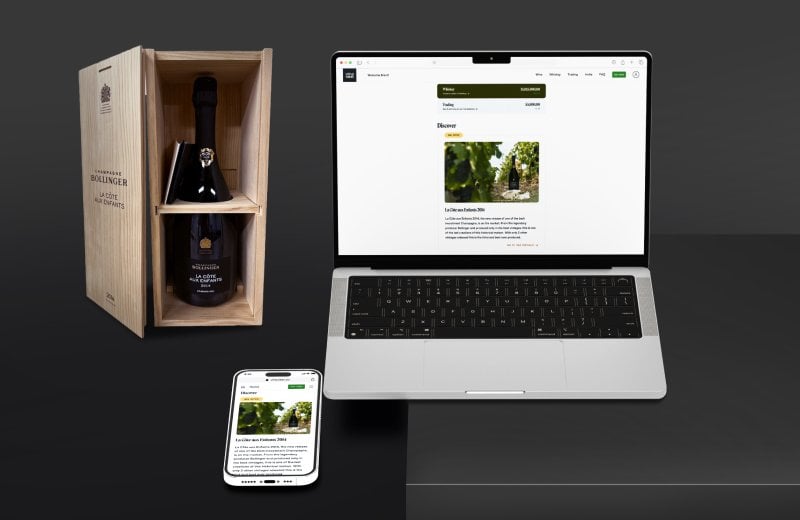
In Case You Missed It
Rate cuts weren’t the only things making headlines in Q3. The Vinovest team was out sharing some wisdom about the world of wine and whiskey in print, online, and beyond. Here are the highlights.
Can You Really Make Money by Investing in Wine?Food & Wine,July 22, 2024
“Wine is a legitimate investment, and some are working to democratize the practice.” Vinovest CEO Anthony Zhang talked about the world of wine investing (with more than just a simple “yes” to the headline question).
The Rising Demand for Whiskey: How Investors Can Capitalize on the Trend,Benzinga, July 11, 2024
The Vinovest team joined Benzinga for an in-depth webinar on the whiskey industry and how savvy investors are making this alternative asset part of their portfolio.
Best Alternative Investment Platforms,Benzinga, August 20, 2024
Vinovest was also proud to claim the title for Best Wine and Whiskey investment platform among a group of our alt-investment peers.
Grape expectations: How to invest in wine without going sideways,South Florida Sun-Sentinel, September 30, 2024
The paper’s City & Shore magazine went to CEO Anthony Zhang for his insights on wine investing (did you know that over the 15-year period ending in 2023, wine yielded a 10.6 percent annualized return to investors? Perhaps—but can’t hurt to mention again).
Looking Ahead to Q4
As the year closes out, we’ll be keeping an eye on consumer spending in fine wine, particularly in the continued downstream effects of both interest rate cuts and in China, specifically, after their stimulus measures. And, of course, there’s no avoiding the U.S. presidential election, whose winner will set economic policy (including taxes and tariffs) with global reach, including the fine wine and whiskey trades—but we won’t attempt to play pollster and make any predictions there. Finally, on the Vinovest front, we’ll have a few more announcements and offers to wrap up 2024, with more to share in the coming months.
